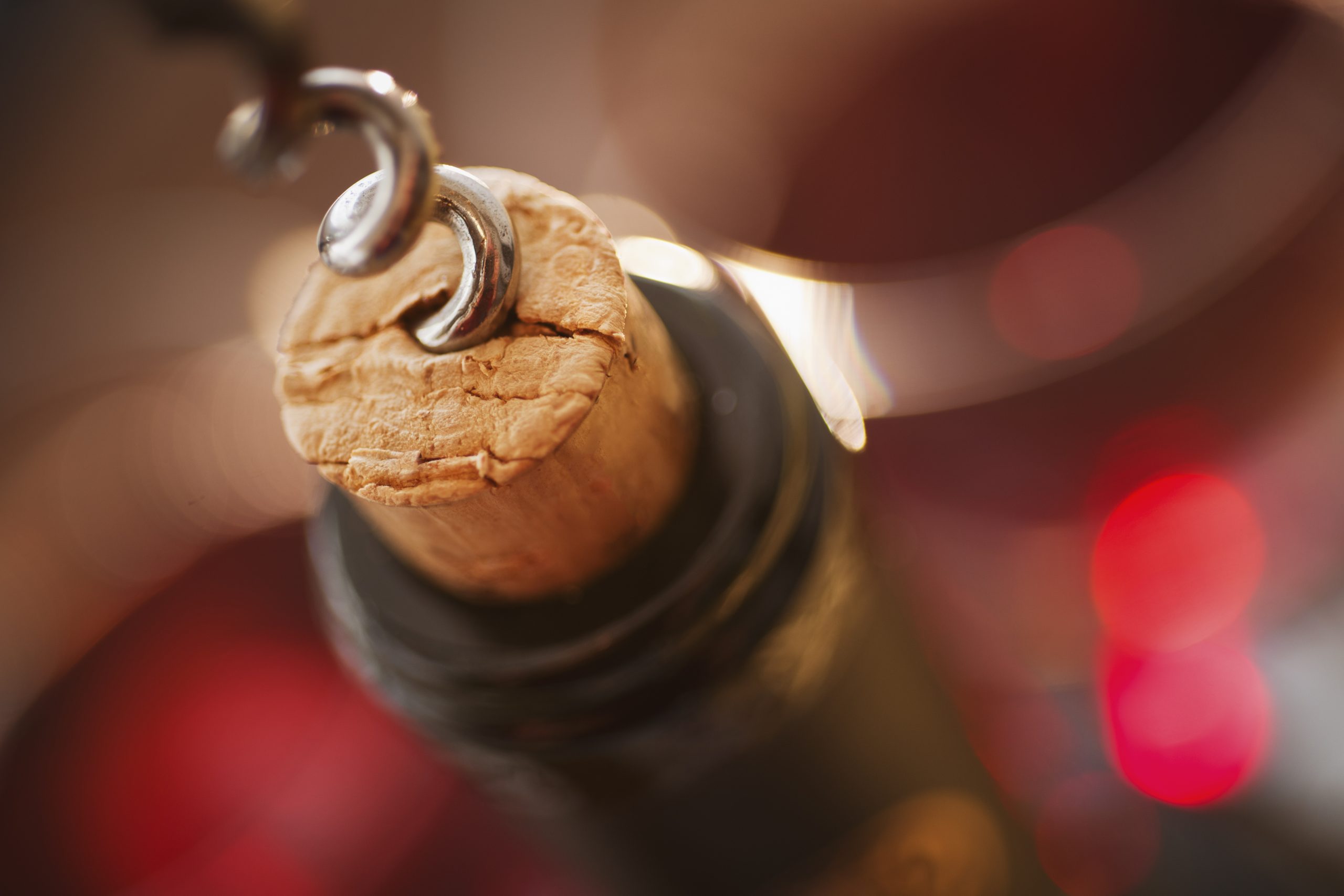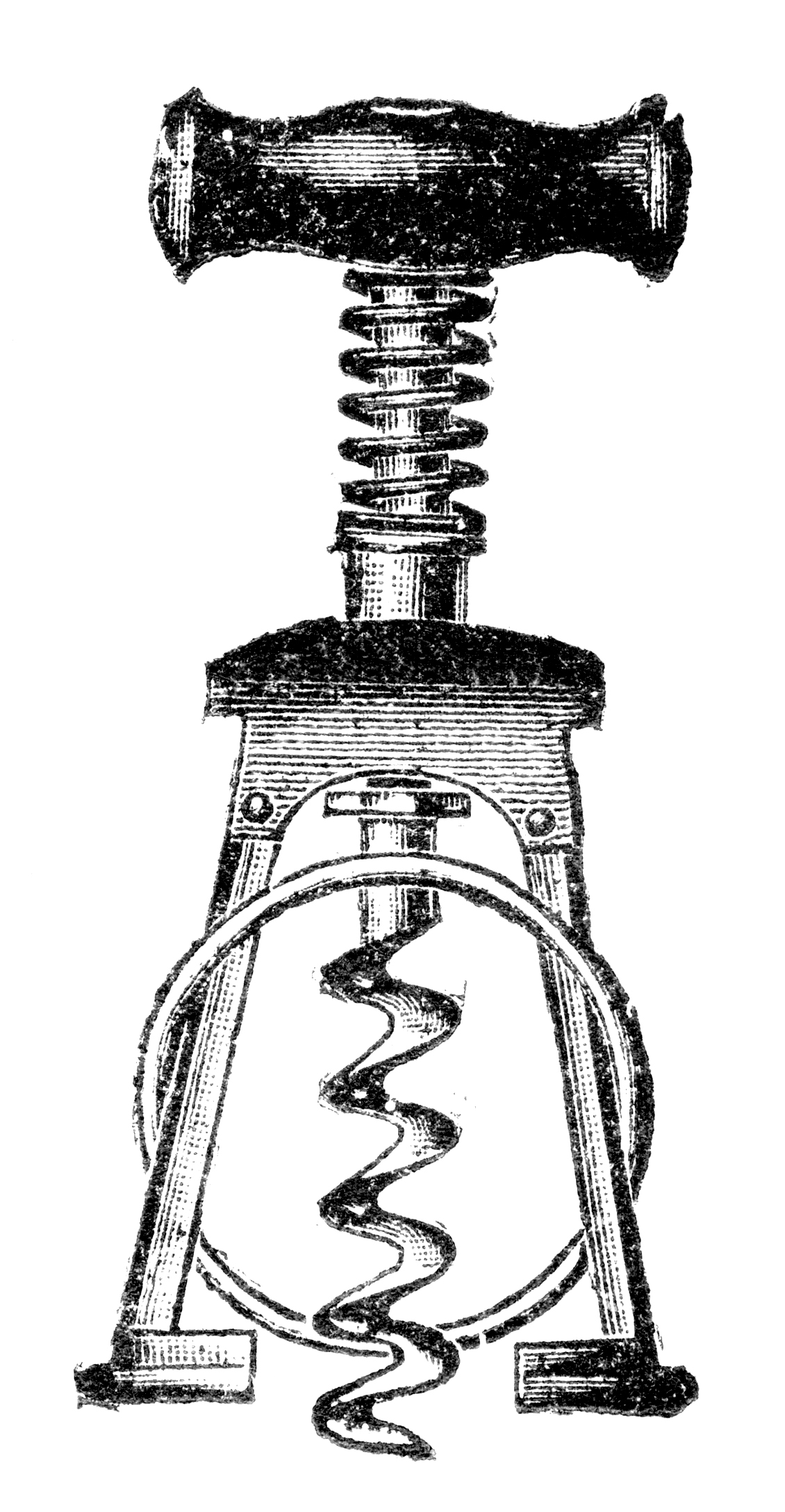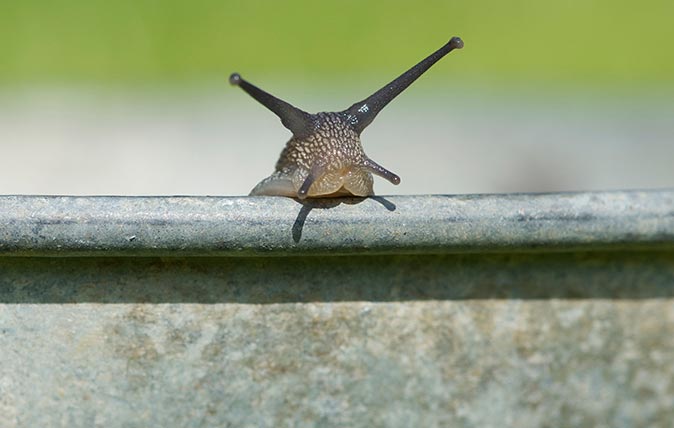Curious Questions: Who first used corks in wine — and how did they get them out again before the invention of the corkscrew?
There's nothing quite like the noise of uncorking a bottle of wine. Despite the inroads made by screwcaps, the majority of us still prefer the ritual of opening a bottle with a corkscrew. But how did we first start doing that in the first place? Martin Fone investigates.


I went to open a bottle of wine the other day and, to my astonishment, I found that it was sealed with a cork.
This prompted a frantic search for a corkscrew, followed by a life-and-death struggle to extract the stopper without corking the wine. I realised then that the life of a sommelier was not for me.
After consuming the bottle’s contents — the perfect time, I find, for existential cogitation — I began to wonder just who it was that had invented the corkscrew.
Until Sir Kenelm Digby cracked the problem of the mass production of uniformly sized bottles made from strong glass in the 1630s, wine was commonly stored in jugs with stoppers made of oil cloth or pieces of wood. After his breakthrough, wine bottles were a cheap and viable option for storing and transporting wine. But the problem of sealing them up had yet to be solved.
Initially, their stoppers were also made of glass, making them tricky to remove and in clumsy or shaking hands, the calamitous outcome would often be the breakage of the bottle or the ruination of its contents.
Around the middle of the century, stoppers started to be made of cork — an ideal substitute, being cheaper to manufacture than glass and making a tighter seal. But an added benefit was soon discovered: a well-fitted cork, by allowing little more than a milligram of oxygen into the bottle per annum, removed the sulphites added in the bottling process, slowed down the oxidation process and allowed the wine to age and develop secondary aromas.
Having sealed the bottle with a cork, the next problem was how to remove it. Rudimentary corkscrews of necessity soon appeared using a piece of equipment a soldier would have in his kitbag: a gun worm. Their muskets were inefficient, would often misfire and the musket ball would get stuck in the barrel of the gun. To remove the offending ball, the soldier would use the gun worm — which was screw-shaped — to drill into the lead and drag the bullet out.
Exquisite houses, the beauty of Nature, and how to get the most from your life, straight to your inbox.
The same principle could be applied to a wine bottle. The earliest reference to the device, in a museum catalogue from 1681, describes ‘a steel worme used for the drawing of Corks out of Bottles’, usually with a ring on the top to allow the user some purchase. It was later called a bottlescrew before the term corkscrew was settled upon.
"A quick tug and even the tightest-fitting cork would be released accompanied by that satisfying popping sound."
It is a curious thing, but those who make a significant contribution to wine technology seem to be raffish characters. It seems to go with the territory. Samuel Henshall, elected a fellow of Brasenose College, Oxford in 1793, was a philologist, publishing several books including a translation of The Domesday Book. He was also a clergyman, serving as curate of Christ Church, Spitalfields and, from 1802 to his death in 1807, as rector of Bow Church, where he is buried.
Finance was not his strong point. Often in debt, he was dragged to the debtors’ court three time, once by a brewer to whom he owed the princely sum of £420. But for helixophiles — the name given to aficionados of the corkscrew — he can do no wrong.
The reason? Henshall revolutionised the design of the corkscrew.
His brainwave was to add a small metal disc to the top of the screw which limited how far into the cork the screw could travel. Once this point had been reached, by twisting the handle the cork would turn, thus breaking the seal that had formed between it and the neck of the bottle. This achieved, a quick tug and even the tightest-fitting cork would be released accompanied by that satisfying popping sound. There was even a brush on the end of the corkscrew to remove the motes of dust that had settled on a vintage wine that had been laid down in the cellar.

Convinced that he was on to a winner, Henshall called on the services of a manufacturer and entrepreneur, Matthew Boulton, who had collaborated with James Watt in developing the stationary steam engines that did so much to fuel the Industrial Revolution. In a letter detailing his invention to Boulton, Henshall sang its praises, describing it as ‘a new mode of applying the screw, and a mode which every person who sees it will be surprised that he himself did not find out. It will have the power to extract the hardest, tightest or most decayed cork’.
Boulton agreed to support the venture, but — unsurprisingly, given the state of Henshall’s parlous finances — had difficulty in getting the inventor to stump up his share of the patent expenses. Boulton’s legal advisor wrote to him somewhat wryly: ‘I doubt I shall not so easily extract £50 from the Parson as he would a cork from a bottle.’ The patent, awarded in 1795, did not transform Henshall’s fortunes and when he died, in debt of course, it is said that his stock of corkscrews was buried with him.
Without wishing to turn the screw further on Henshall’s reputation, it is claimed that he had stolen the idea, possibly from a Dublin-based cutler by the name of Thomas Read who had invented a similar device, the coaxer, in the 1770s. Be that as it may, Henshall held the first patent and can claim to have given the world of the corkscrew the impetus it needed.
In 1802, Birmingham-based Edward Thomason came up with a corkscrew with one screw inside the other. Upon turning the handle, the inner screw went down into the cork, stopping when the outer screw engaged and pulling the cork upwards. Those who know about these things claim it to be the finest corkscrew ever designed.
Another Englishman, Marshall Weir, developed the concertina corkscrew in 1884, consisting of a set of collapsible levers which folded over the screw. The cork was extracted by pulling them open with a ring. The now familiar design involving a couple of arms, which lift when the screw is turned into the cork and are pushed down again to remove it, was patented by Dominick Rosati in 1930.
Such is the growth in screwcaps that in 2016 only 70% of wine bottles were sealed with natural cork. However, in these days of heightened environmental and sustainability concerns, there are signs that cork might by springing back. Studies into various forms of stopper suggest that on most tests of environmental impact, cork is the most environmentally friendly. For oenophiles, there are also concerns that other types of stopper do not provide as tight a seal, enhancing the speed at which the wine oxidises and reducing its drinking life. Perish the thought.
I suppose it is a question of ‘you pays your money, you takes your choice’. Someone who did pay their money was an anonymous bidder at an auction in Essex in November 2014. What they got for their £40,000 was a corkscrew some of whose parts were made from metal salvaged from London Bridge when it was demolished in 1831.
I do not think we have seen the last of the corkscrew just yet.

Credit: Alamy
Curious Questions: Why are wine bottles all pretty much the same shape and colour?
We drink 36 billion bottles of wine a year — and almost all of them come in wine bottles that share

Curious Questions: How will we greet each other in a post Covid-19 world?
Kissing cheeks will surely be frowned upon, and even the humble handshake may struggle to regain its pre-eminence. But what

Credit: Alamy
Curious Questions: Does throwing a snail stop it from returning to your garden?
The oldest gardeners' remedy for getting rid of snails is also the simplest: throw them as far away as you

Having a house with an outdoor swimming pool is easier than ever — and more beautiful too, as these places show
If the blazing hot weather this week has inspired you to keep an eye out for a house with a

Credit: Dreamstime
How to buy a bottle of fine wine good enough to pass down as an heirloom
How to buy a bottle of fine wine good enough to pass down as an heirloom
After graduating in Classics from Trinity College Cambridge and a 38 year career in the financial services sector in the City of London, Martin Fone started blogging and writing on a freelance basis as he slipped into retirement. He has developed a fearless passion for investigating the quirks and oddities of life and discovering the answers to questions most of us never even think to ask. A voracious reader, a keen but distinctly amateur gardener, and a gin enthusiast, Martin lives with his wife in Surrey. He has written five books, the latest of which is More Curious Questions.
